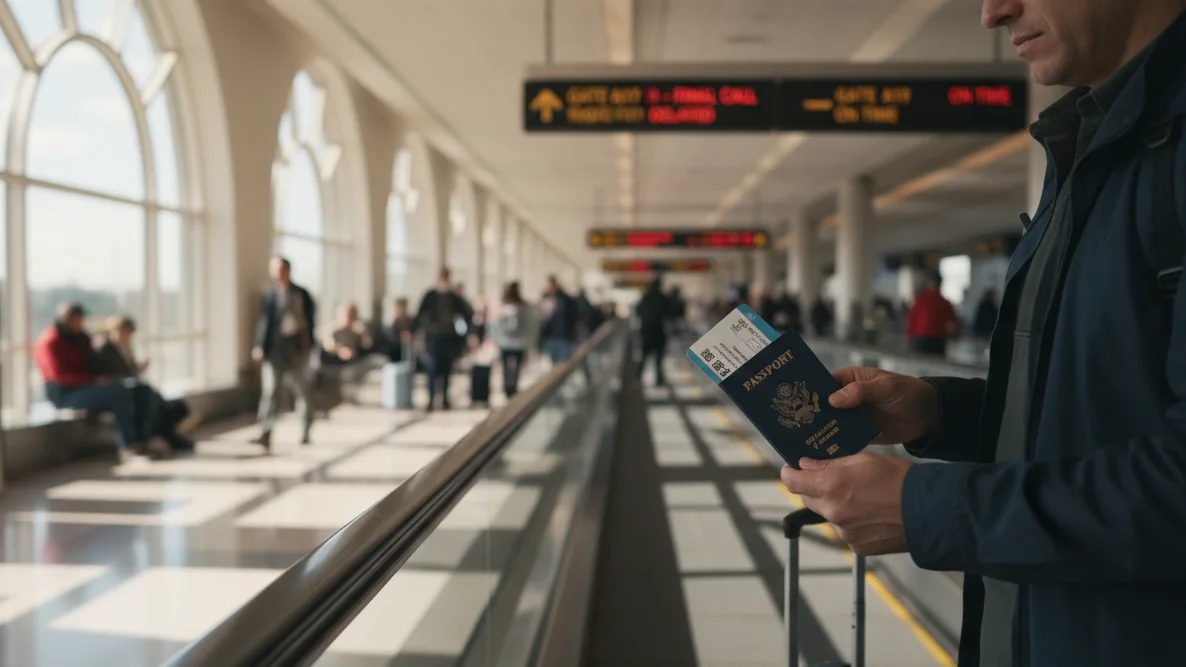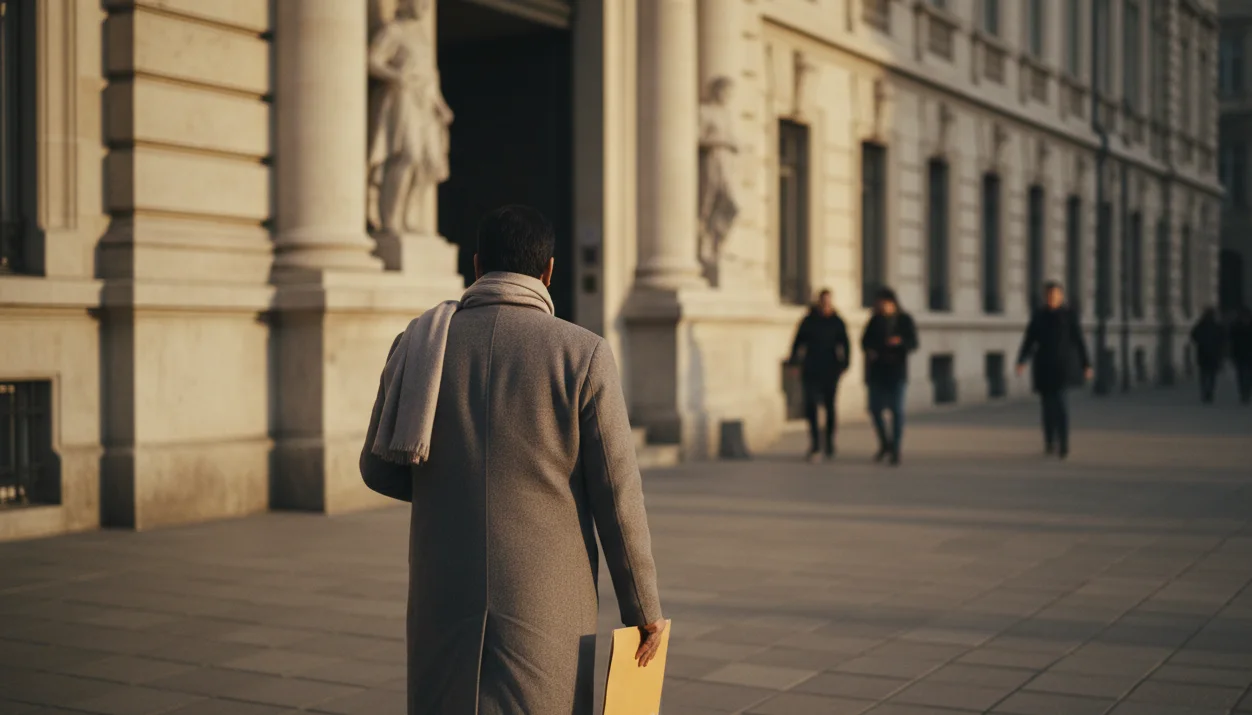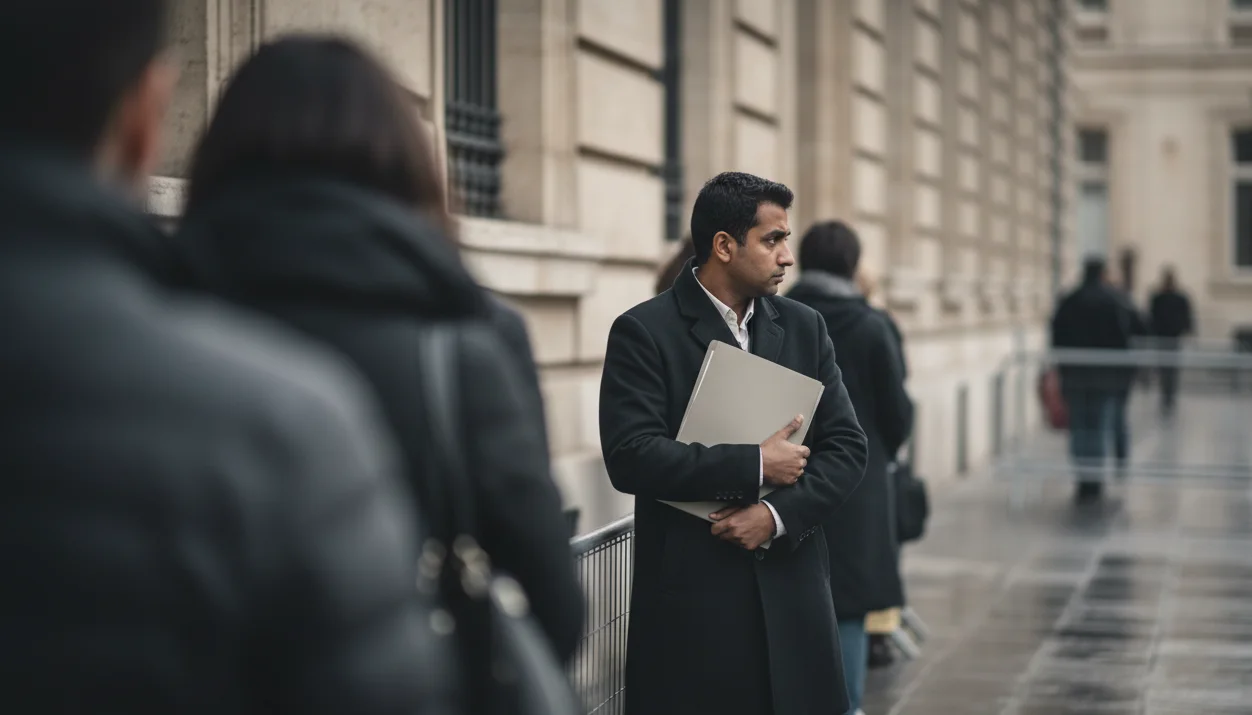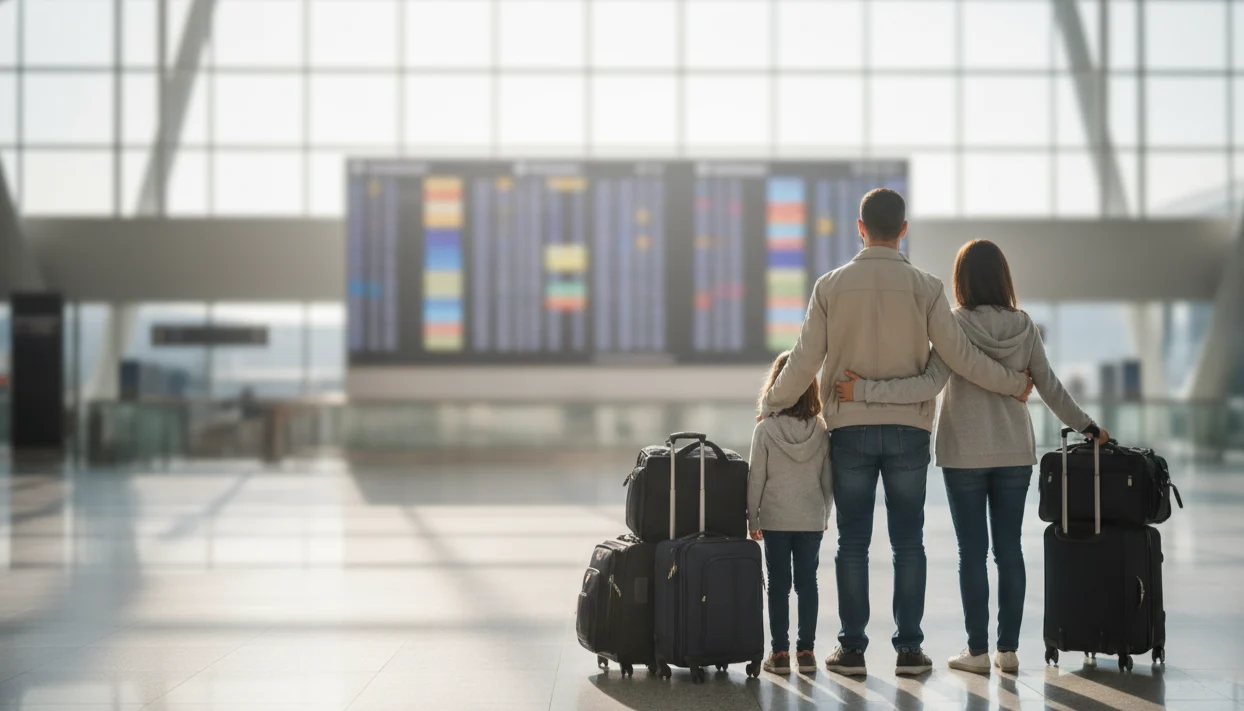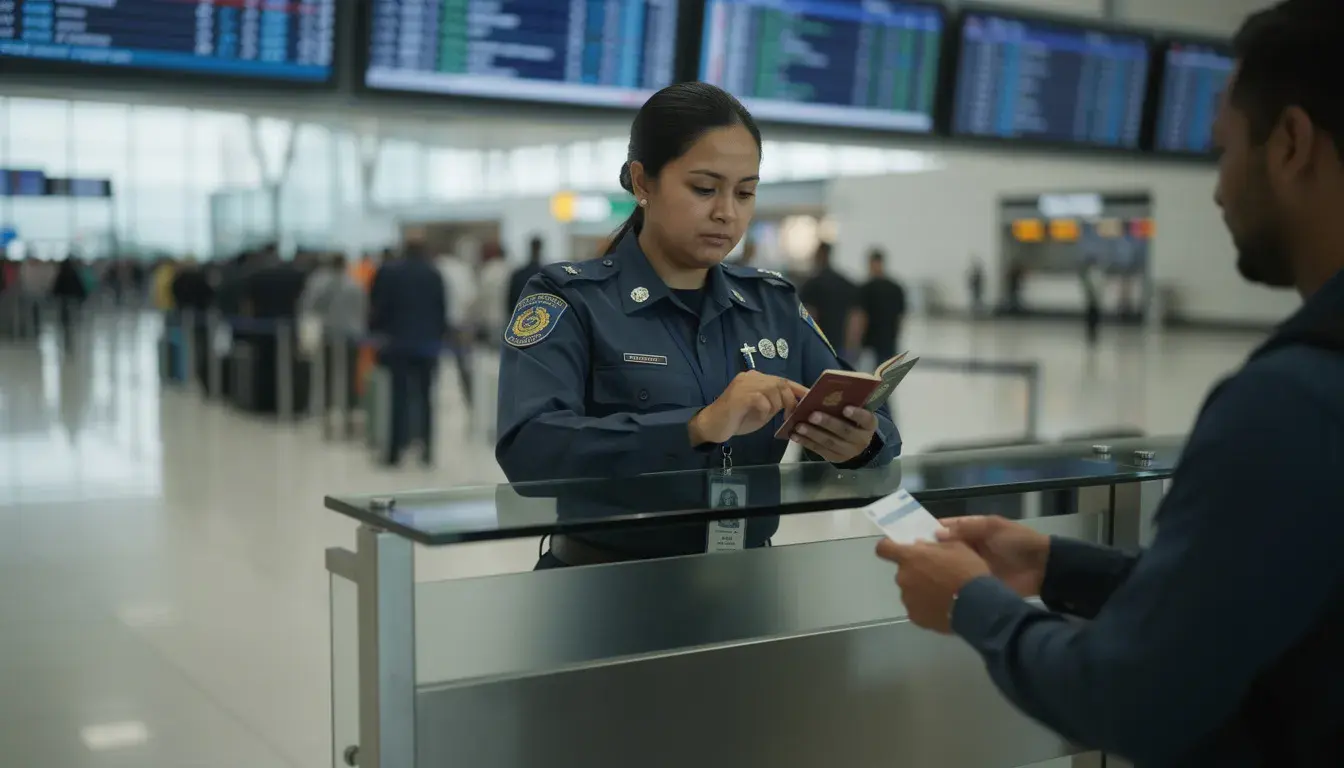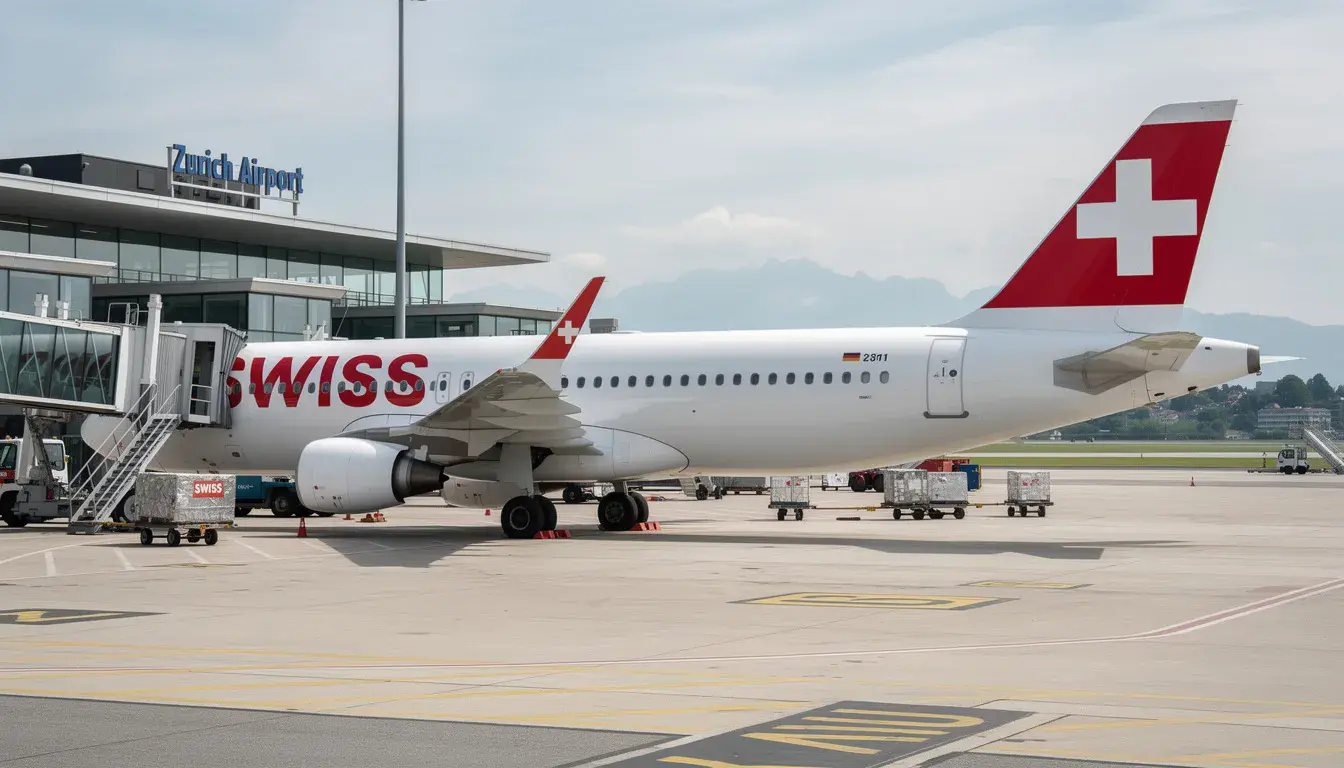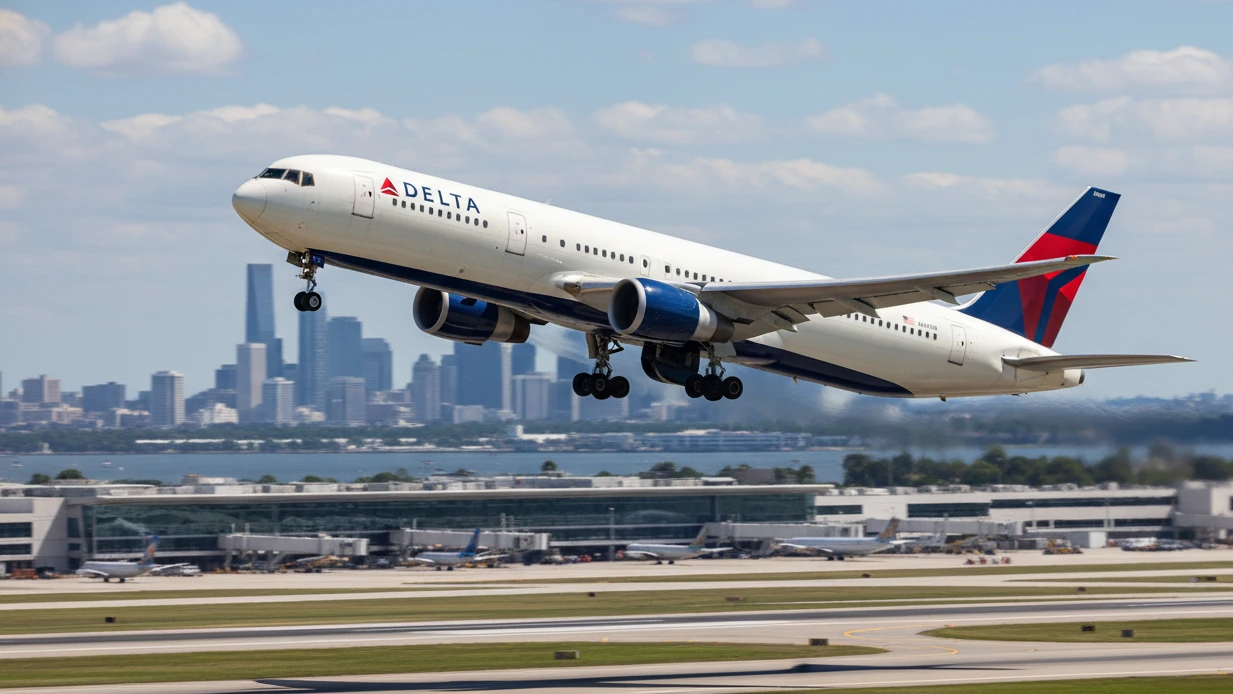Do You Really Need a Flight Ticket for US C Visa? Here’s What Officers Actually Check
Your transit is only two hours in New York, yet the screen keeps flashing “Buy now.” You pause. Do you really need a paid ticket to get a US C visa? Short answer: no. You need credible onward travel that matches what you declare, not a fully paid fare. A dummy ticket provides that verifiable proof without the risk of nonrefundable costs.
We guide you through the C visa reality from India. You complete DS-160, pay the MRV fee, and avoid purchasing nonrefundable tickets before the visa is issued. What the officer wants is consistency and proof you can continue to your final country. Secure your visa interview with a verified itinerary—start your dummy ticket booking now. For more visa application tips, check our FAQ or explore detailed advice in our blogs.
No — a paid flight ticket is not mandatory for a US C (Transit) Visa, but showing a confirmed onward flight itinerary can make your application significantly stronger. U.S. consulates must see clear proof that you are transiting the United States and continuing to a third country. A verifiable dummy ticket with a real PNR from BookForVisa.com is accepted as official proof of onward travel and helps avoid delays, inconsistencies, and unnecessary questions during the visa interview — all without buying an expensive non-refundable ticket in advance.
Last updated: November 2025 — verified against current US C-Visa (Transit) documentation and consular guidelines.
Learn about our team's expertise on About Us page to understand how we support travelers like you.
What Consuls Really Want To See Before Your C Visa Interview

You already know you should not buy a nonrefundable ticket before the visa is issued. So what do you bring instead, and how do you line it up with your DS-160 answers without boxing yourself in? Think of this section as your pre-interview playbook for India-origin trips that only transit the United States. Need a live PNR for your appointment? Instantly book a dummy ticket and keep your plans flexible.
The Official Stance, Decoded For Indian Applicants
The US position is simple. Complete DS-160, pay the MRV fee, and avoid making nonrefundable travel purchases until a decision is made. Officers are not trying to trap you. They want to see a plan that connects India to your final country through a US airport in a sensible way. For official guidelines, refer to the US Department of State.
For a C visa, that means one thing above all else. Credible onward travel. You are not required to show a paid ticket. You do need an itinerary that looks real, can be checked, and matches what you declared. This is where a dummy ticket shines, offering a verifiable reservation without commitment.
Credibility Over Cash: What Counts As “Good Enough”
Think in terms of strength. At the top, a fully refundable ticket. Next, a confirmed reservation or airline hold with a live PNR. Then, a detailed itinerary from an airline or agent. Finally, a legitimate dummy ticket that mirrors your route and dates. Any of these can work when they are consistent, current, and explainable.
Choose based on your risk tolerance and cash flow. Many Indian travelers prefer a verifiable reservation or short-validity dummy ticket for the interview, then purchase the paid ticket after approval. That keeps funds free while showing a route the officer can understand. To expand on visa proof options, our blogs cover more strategies.
Align DS-160 Answers With Your Travel Story
Your DS-160 is the backbone. Officers look for harmony between what you typed and what you bring on paper or phone. Keep these points aligned.
-
Transit City In The US. If you expect to connect in New York, do not list Dallas. Pick the most probable hub.
-
Carrier And Route. If you mention United via Newark, do not show a proof that only fits a Delta connection in Atlanta. Small adjustments are fine. Entirely different routings invite questions.
-
Final Destination Country. This must match across DS-160, your itinerary, and any invitations or onward visas.
-
Travel Window. Pick dates you can defend. If you plan a two-week window, your proof should sit inside that window.
If something changes after submission, it is not fatal. Bring the updated itinerary and a one-line reason. Conference moved. Cheaper fare on a parallel routing. Family event shifted by a week. Consistency is ideal, honesty wins. For common DS-160 pitfalls, visit our FAQ.
What To Finalize Before You Ever Talk About Money
You want a clean file and a simple story. Prepare these items before you consider paying for a ticket.
-
Passport validity that extends past your travel date, with spare pages.
-
Prior visas and travel history, especially to your final destination region.
-
Employer letter or business invite if relevant. Students can bring fee receipts, enrollment letters, or exchange program notes for the final country. Family visitors can carry invitation details for the destination stop, not the US. Digital nomads can show client letters or contracts if requested.
-
Entry permission for the final country if required. Canada eTA or visa, Mexico visa or exemption, Schengen visa, UK visa, or proof you do not need one.
These are supporting pillars. They show you will be admitted after the transit, which is what the officer and the airline care about.
India-Specific Realities: Fares, Refunds, And Rupee Exposure
Airfares on India-origin itineraries move quickly. Buying only after approval protects you from a sunk cost, yet you must be ready for a higher final fare. Plan a buffer in INR. Watch your bank card’s international markup and conversion fee. To learn more about managing travel costs from India, see our About Us insights.
Refundable tickets are safer, but “refundable” often means refundable minus a service charge. Agencies may process refunds slower than airlines. If you rely on a hold, know the expiry window so you do not walk into a no-show.
A quick checklist helps.
-
Budget cushion for fare jumps after approval.
-
Clear knowledge of refund terms in writing.
-
Awareness of GDS hold validity, often 24 to 72 hours, sometimes longer if arranged.
-
No-show consequences with your agent, especially if you miss a hold cancellation deadline.
What “Makes Sense” To A Consular Officer
Officers look for operational logic. That is their phrase for plans that could happen in the real world. If you say Mumbai to Panama City via New York, same-day onward travel makes sense. If you show a 28-hour gap with no hotel or connection proof, expect questions. Show the thread that connects each step.
-
Reasonable connection time that accounts for CBP formalities when required.
-
Same metropolitan area if you switch airports, for example JFK to EWR, with a plan for ground transport.
-
Baggage plan if you travel on separate tickets. Indicate if you will reclaim and re-check.
-
Accessibility for seniors or minors. If you travel with parents or children, keep bookings linked or cross-referenced.
Pick The Right Proof For Your Situation
Different traveler profiles have different sweet spots.
-
Students. Use a verifiable reservation that lines up with university dates or orientation at the final destination. Keep fee receipts and enrollment letters ready.
-
First-Time Applicants. Favor a confirmed reservation with a PNR that an officer can verify on the spot. Keep it simple and close to your DS-160 route.
-
Family Visitors. If your onward visit is time-bound for a ceremony or milestone, include that invite. Keep the transit routing straightforward.
-
Digital Nomads. You can remain flexible on dates, but your onward country rules still apply. Carry proof of entry permission and a clear itinerary that fits visa requirements.
How To Talk Through Your File At The Window
You will have a short conversation. Make it count. Be brief, confident, and consistent.
-
Offer the itinerary or reservation only when asked.
-
If the officer asks why you did not buy a full ticket, say you followed official guidance to avoid nonrefundable purchases before issuance.
-
If your route changed by a day or two since DS-160, say so and show the updated print or PDF.
-
If asked about the final country visa, show the eTA or visa page. If it is visa free, say so and show the rule on your phone if requested.
A One-Page Consistency Sheet You Can Prepare Tonight
Create a single sheet that keeps everything tight and readable.
-
Name exactly as in passport.
-
DS-160 confirmation number and interview date.
-
Transit city and carrier.
-
Final destination country and city.
-
Travel window and intended flight numbers.
-
Proof list. Reservation PNR, destination visa or eTA, employer or university letter.
Carry this with your originals and PDFs on your phone. When your story is tidy, the interview feels easy.
When To Pay For The Ticket Without Regretting It Later
You want a clean handover from interview to travel. The trick is to show a plan that looks real, then buy at the right moment once the visa is in motion. Use this section to lock in your timeline, protect your money, and keep every document consistent from DS-160 to boarding. Avoid nonrefundable fares before approval—use a fast, reliable dummy ticket booking instead. 👉 Order your dummy ticket today for peace of mind.
Build A No-Drama Timeline From DS-160 To Boarding
Start with a simple sequence you can follow even if dates move.
-
Before Interview
-
Prepare a credible, verifiable reservation that aligns with your DS-160.
-
Keep funds ready in INR for the final purchase.
-
Collect entry permission for your final country if needed.
-
-
Interview Day
-
Answer straight. Your plan is to purchase the actual ticket after approval.
-
Show the reservation if asked. Confirm that the routing and dates match your declared window.
-
-
After Approval Granted
-
Track your passport status.
-
Buy the paid ticket when the status shows issuance in progress or when you receive the visa.
-
Keep dates and routing close to what you declared. Small shifts are fine. Large changes need a clear reason.
-
-
If Administrative Processing Happens
-
Do not purchase yet.
-
Extend or refresh your reservation to avoid a no-show.
-
Prepare a short note explaining any future date adjustments.
-
Name, Date, Route: Keep The Three Pillars Aligned
Alignment prevents last-minute headaches at the counter.
-
Name
Match your passport exactly. Given name and surname in correct order. No extra initials. Watch for spacing. -
Dates
Stay within your stated window. A shift of a few days is usually fine. If your travel moves by more than a week, update your proof and be ready with one line of explanation. -
Route
Keep the same final country and a comparable US transit point. If you move from JFK to EWR, it is still New York. If you swap airlines, show the same arrival day or the same next-day connection.
The “Green Light” Moment To Pull Out Your Card
You do not need to guess. Wait for one of these signals.
-
Your passport status shows printing or dispatched.
-
You receive the visa physically.
-
You have written confirmation that processing is complete and delivery is pending.
If the trip is time sensitive, buy when printing begins. If you can wait, buy after the visa is in your hand. This reduces refund drama and fare change stress.
Guard Your Wallet If Plans Shift
Plans do change. Protect yourself with simple rules.
-
Favor fares with low change fees during this window.
-
If your reservation expires, refresh it with updated dates that still match your DS-160 window.
-
Cancel holds you will not use. Avoid no-shows that can block future holds with the same agency.
-
Keep a buffer in your budget for fare jumps between interview and issuance.
What To Do When The Window Slides By A Week
A common Indian scenario is a meeting that moves or a family event that shifts.
-
Update the reservation and keep the same final country.
-
Adjust the US transit time sensibly.
-
Carry the new proof and a one-line explanation. Conference moved. Wedding date changed.
-
If the shift is beyond two weeks, consider a short letter from your employer or host at the destination country to show the new date.
Separate Tickets, Same Day Connections, And Overnight Plans
Your connection type decides your buffer time and paperwork.
-
Single PNR
Bags usually through-check. Two to three hours can be enough at major US hubs. -
Separate PNRs
Expect to clear CBP, collect bags, re-check, and clear security again. Aim for four to five hours. -
Overnight
Keep hotel details or a trusted contact address in the US city. Carry funds and essentials in cabin baggage. Confirm terminal hours if you plan to stay airside.
Switching Airports In One Metro Without Losing Your Thread
This happens more often than you think. A fare opens at Newark instead of JFK. A schedule change pushes you to LaGuardia.
-
Keep the same final country, similar connection day, and a practical transfer time.
-
Show a quick ground plan. For example, shuttle or rideshare time between JFK and EWR with morning buffer.
-
Print or save both PNRs to your phone. Agents appreciate fast, clear evidence.
Four Traveler Profiles, Four Clean Playbooks
Different goals. Same need for consistency.
-
Students
Reserve flights that align with orientation or reporting dates at the final destination. Keep fee receipts and enrollment proof handy. Buy after the visa prints. If a class start shifts, refresh the reservation and carry the email from the university. -
First-Time Applicants
Keep the routing simple. One US hub is easier to explain than two. Use a reservation with a live PNR. Buy once the passport tracker shows printing. -
Family Visitors
Match dates with the ceremony or family event at the final destination. Carry the invite. If the event moves, update the reservation and bring the new card or message. -
Digital Nomads
You value flexibility but officers value admissibility. Carry proof you can enter the final country and show a realistic onward plan. Buy the paid ticket when issuance starts or completes.
A Quick Decision Tree You Can Follow Today
When you wake up to an update, use this logic.
-
Status: Pending
Keep your reservation active. Do not buy yet. -
Status: Printing
If travel is soon, purchase now. If you have time, you can still wait for delivery. -
Status: Delivered
Buy the ticket, match names and dates, and double check terminal and airport codes. -
Status: Administrative Processing
Pause. Refresh proofs. Keep funds free. Update dates as needed and document the reason.
Small Details That Save Big On Travel Day
Little things often decide how smooth your transit feels.
-
Keep your itinerary PDF in your email and on your phone.
-
Carry the entry permission for your final country, printed or offline.
-
Add a backup card for payment in case your primary card fails a 3D Secure check.
-
Pack prescriptions, chargers, and one set of clothes in cabin baggage.
-
Use airline apps to monitor gate changes and check-in times at the US hub.
Your One-Page Consistency Sheet, Upgraded
You prepared a simple sheet earlier. Give it one more polish after approval.
-
Visa number and validity dates.
-
Exact name format copied from the visa.
-
Paid ticket details. Airline, flight numbers, US transit airport, final country.
-
Baggage plan. Through-check or re-check.
-
Any updates since the interview with a brief reason.
When everything tells the same story, officers, airline agents, and CBP can move you along quickly. You protect your money, keep your options open, and step onto the aircraft with full confidence.
Airport Reality Check: What Airlines And CBP Verify On Transit Day
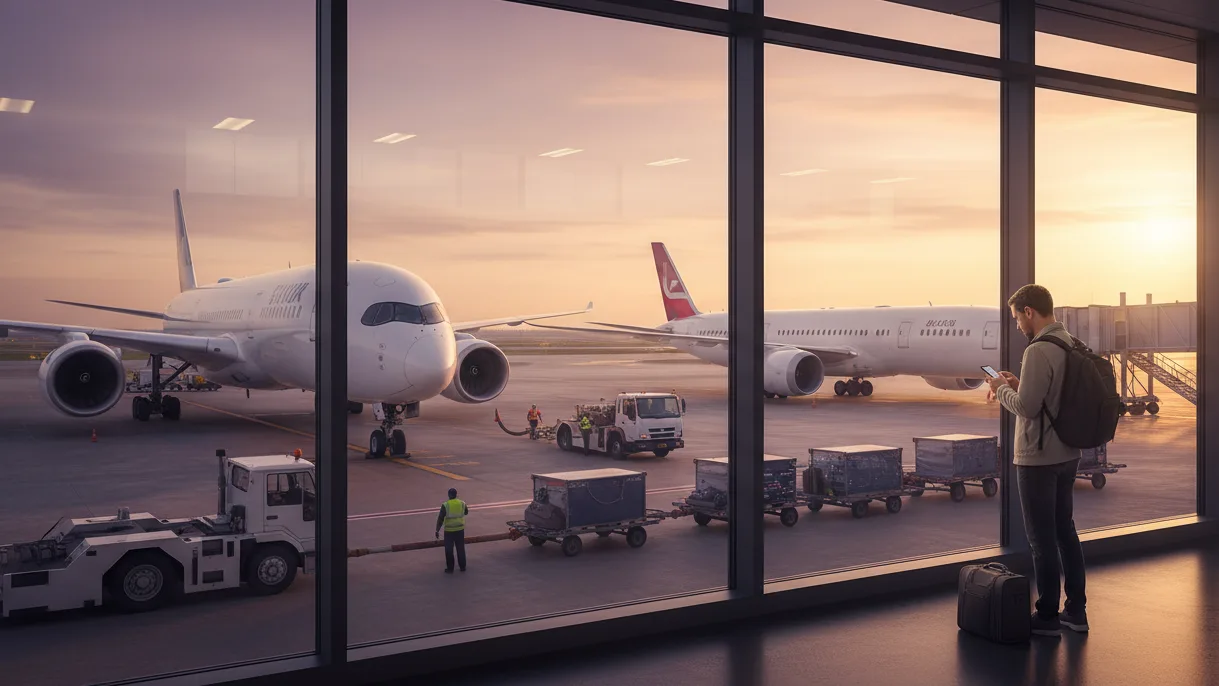
You’ve cleared the interview stage and you’re eyeing the connection timer. This is where practical prep meets real-world checks. Use this section as your day-of-transit playbook so you move through counters and controls without surprises. Got dates shifting? Book a dummy ticket and change them anytime without stress.
At Check-In: What Agents Actually Look For
Airline staff are trained to prevent carriage problems, which means they verify just enough to confirm you will leave the US on schedule.
-
Your travel document trio: a valid passport, your nonimmigrant visa in the correct visa category, and a reservation that proves onward travel arrangements.
-
Proof that you will depart the United States on the next available connection consistent with your plan.
-
Whether your journey qualifies as a transit visa situation or another status.
-
If you’re a visa holder whose booking changed, staff may ask for final travel plans to ensure timing is still feasible.
-
When a foreign citizen is on separate tickets, agents want to see both confirmations so baggage and timing make operational sense.
If a foreign citizen traveling with you lacks a required document for the destination, the airline can refuse boarding because the United States generally requires carriers to ensure passengers are admissible to the onward point. For industry standards, see IATA guidelines.
CBP Questions: Show You’re Moving, Not Staying
At primary inspection, be ready to demonstrate immediate and continuous transit. Keep answers short and documents tidy.
-
Your connection should reflect a brief layover that aligns with the airport’s processing realities.
-
“Reasonably expeditious departure” is the expectation; officers frown on unreasonable layover privileges that look like a stealth visit.
-
Bring evidence that you will arrive at a foreign port and continue the trip as booked.
-
If asked, show that your routing is continuous transit rather than a side trip.
-
A quick note on money helps: sufficient funds for the journey if you need to rebook due to delays.
Special Corridors: UN, Diplomats, And International Delegations
New York hosts the united nations, and that creates unique transit rules around the united nations headquarters district.
-
The c 2 visa is a narrow pathway tied to the headquarters agreement. It is meant for persons traveling specifically to the UN area under diplomatic transit rules.
-
If your travel is connected to a designated international organization, confirm whether you fall under a designated international organization assigned role or if you simply pass through as a regular C-1 traveler.
-
Foreign government officials on official business should check if either a nonimmigrant visa in C-2 or another status fits the trip.
-
When in doubt, consult mission guidance. If your purpose is meetings at the UN rather than tourism, your documentation must match that purpose.
These scenarios are niche, but the stakes are high. Pick the correct path the first time so your application process doesn’t stall.
Sea And Air Oddballs: Cruise, Yachts, And Maritime Crew
Not every trip is airport-to-airport. Seafarers and passengers sometimes connect to the sea.
-
If you will board a cruise ship after a US transit, carry the cruise confirmation so an officer sees the passenger embarking plan.
-
Maritime crew may need a crewmember d visa when duties begin after arrival; rules differ if a foreign ship or other vessel brings you in.
-
If your vessel makes port in the US before continuing abroad, ensure the documents match carrier and schedule.
-
A coasting officer seeking to join the same foreign line must show proof of assignment rather than tourist intent.
-
Private yacht sailing into or out of the US is niche; have port documents ready if a private yacht figures into your route.
These cases live and die on clarity. Have letters that specify the ship, port, date, and the point you exit to a foreign country.
Families And Groups: Make The Paperwork Talk For You
Traveling with parents, kids, or teams? Group trips move slower. Plan for that.
-
If more than one person is on the PNR, carry cross-referenced itineraries in case counters split you up.
-
Bring a child’s birth certificate when surnames differ or guardians travel separately.
-
Officers may ask for additional requested documents if something looks mismatched. Keep a simple folder with essentials.
-
For a foreign citizen proceeding to a third country for a ceremony or reunion, invitations help map the story.
-
If visa required rules apply for the destination, carry that approval with print and offline copies.
-
Keep a modest cash and card buffer as sufficient funds for rebooking or an overnight.
Paperwork Hygiene: From Online Form To Boarding Gate
A clean document chain is the easiest way to keep the line moving.
-
Your DS-160 was the online form; make sure what you carry reflects the nonimmigrant visa application you filed.
-
At the visa applicant’s interview you presented a travel story. Stick to it now unless a genuine change occurred.
-
Keep the basics from the format explained in consular instructions: passport, confirmation page, one printed photo if requested, and any additional documents referenced in your case.
-
Digital fingerprint scans are routine at US entry. Remove rings and moisturize lightly so scans read quickly.
-
If you renewed after approval, carry the new valid passport and the expired passport that holds the visa.
-
Never treat a transit as a workaround for immigrant visa goals or permanent residence plans. Different intentions require a separate application.
When your documents tell the same story, you rarely face extra queries.
After Security: Small Choices That Avoid Big Delays
Think about the last mile from gate to gate so you don’t miss the onward flight.
-
Sit near the front if you need to make a tight connection.
-
On separate tickets, ask the first airline to tag bags through; if they refuse, budget time for reclaim and re-check.
-
If you must switch terminals, use official airside connectors where available, or plan landside time conservatively.
-
In case of irregular operations, ask the carrier to re-protect you so you still depart the United States on the same day or the next available connection.
Government, Groups, And Labels
A few labels you might hear at counters or in guidance:
-
Foreign government travel can trigger different checks, especially when providing services to a mission.
-
International organization events require accurate IDs and letters that provide detailed information about the purpose and dates.
-
If your party includes a c visa holder and someone under a different status, make sure each traveler’s label matches the itinerary.
-
When an agent mentions layover privileges, they are checking the timeline against reasonably expeditious departure expectations.
Quick Checklist You Can Screenshot
-
Reservation that shows you will depart the United States quickly.
-
Proof of arrival at a foreign port or onward city.
-
Destination entry permission printouts.
-
Cash or card buffer for disruptions.
-
Copies of both passports if your visa sits in an expired passport.
-
Letters for cruise ship boarding, foreign ship assignments, or international organization meetings, if any.
Handled this way, your brief layover feels exactly like it should: a smooth, efficient step on the way to somewhere else.
Cases That Trip Up Indian C Visa Travelers
You have the basics nailed. Now let’s stress test your plan against the odd situations that catch even frequent flyers off guard. Work through these scenarios before you pack. You will move faster and answer questions with confidence. Preparing documents tonight? Book a dummy ticket and get your PDF in minutes.
If You Are Coming To The United Nations Headquarters District
Many India to Latin America or Caribbean routings pass through two transit countries after the US. That is fine. Keep the story crystal clear.
-
Build a one-page map of the trip with city pairs and times.
-
Carry proof for each border on the path. If you connect in Mexico City on a separate ticket, include that booking and entry permission if required.
-
Keep the same final destination that you declared at the interview. If plans evolve, carry the updated confirmations and a brief reason for the change.
-
Avoid unrealistic ground transfers between airports in different cities unless you have a paid plan and enough buffer.
Domestic Connections Inside The US On C-1
Some routings land in one US city and connect domestically to another US city before you exit the country.
-
This is normal when the airline’s hub is elsewhere. Your C-1 still expects you to continue to a third country without delay.
-
Keep connection times practical. Two hours can be tight if you reclaim and re-check bags.
-
If you need to switch airports within the same metro, show a ground plan and allow generous time.
-
Do not plan tourism during the layover. You are transiting, not visiting.
Separate Tickets And Codeshares That Behave Differently
Interline agreements save time. Separate tickets cost time. Know which one you have.
-
With a single PNR and interline partners, baggage usually goes to the final city. Still confirm at check-in.
-
With separate tickets, assume you will collect bags, clear entry, and re-check. Add hours.
-
Codeshares can confuse agents who only see their own segment. Carry both booking references and the full itinerary page.
-
When a connection breaks due to a delay, ask the first carrier to re-protect you to the next legal connection that preserves your onward plan.
When The Airline Changes Your Transit City At The Last Minute
Schedule changes happen. Keep your paperwork current.
-
If you are rebooked from New York to Atlanta as the transit point, accept the change if timing and final country remain intact.
-
Save the rebooking message. It explains why your route no longer matches the itinerary you showed at interview.
-
If the new plan forces an overnight, ask the airline for a hotel and confirm that the connection still fits the transit purpose.
-
If the new path exits via a country that needs a visa you do not have, request an alternative that preserves your compliance.
Land Borders To Canada Or Mexico After A US Flight
Some travelers fly into a US city and then continue by land to a neighboring country.
-
It is allowed if you keep the same purpose. Show your bus or train ticket and the final country entry permission.
-
Budget more time than you expect. Land borders can slow down at peak hours.
-
Keep your baggage plan simple. Large suitcases and multiple transfers add stress during ground segments.
Traveling With Parents, Grandparents, Or Young Children
Family trips take longer to process. Set yourself up for smooth handling.
-
Link bookings or carry cross-referenced PNRs. Agents prefer to see the family as one unit.
-
Bring documents that prove relationships if surnames differ. A short cover note helps the officer or agent understand who is who.
-
Pack medication and essentials in cabin bags for seniors and children. Long queues happen at US hubs.
-
If one adult connects to a different final country, separate the paperwork clearly to avoid mixed bags or seat issues.
Minors Traveling Solo Or With One Parent
This is sensitive for every border authority.
-
Carry a notarized consent letter if only one parent travels. Include contact details for the other parent.
-
Add copies of ID pages for both parents. Keep school or travel purpose letters where relevant.
-
Airline staff may request additional verification at the counter. Arrive earlier than usual.
Medical Considerations That Affect Transit Speed
Good preparation beats last-minute scrambles.
-
Keep prescriptions in original packaging. Carry a doctor’s note for controlled medications.
-
If you are pregnant and close to the airline’s cut-off, carry a fitness-to-fly certificate on letterhead.
-
Ask for wheelchair assistance in advance if mobility is limited. It often speeds up transfers and security checks.
Duty-Free Liquids And The TSA Reality
That new bottle of perfume from your first leg can be a problem at US security.
-
If you re-clear security in the US, duty-free liquids over 100 ml may be confiscated unless sealed in a recognized tamper-evident bag with a clear receipt. Even then, rules can vary.
-
The safest approach is to buy duty-free on your last leg after you pass US security.
-
Keep power banks in cabin bags and respect capacity limits. They can delay you if packed in checked baggage.
What Happens If You Miss The Onward Flight
It is not fun, but it is fixable if you act fast.
-
Go to the airline desk immediately. Ask for the next available connection to your declared final country.
-
Keep proof that the delay was airline caused. Re-protection is more likely and fee waivers are easier.
-
Update your hotel or host in the final country. A quick message avoids confusion if arrival slips to next day.
-
If the delay causes an overnight in the US, keep receipts and any hotel voucher. Maintain the transit purpose and leave on the next legal flight.
Weather, Strikes, And Other Disruptions You Cannot Control
Plan a buffer, especially in winter or during known strike periods.
-
Morning connections are more reliable than late evening. Delays cascade as the day progresses.
-
Build slack into trips that include separate tickets. An extra hour now can save a misconnect later.
-
Use the airline app for real-time gate and delay notices. Airport screens can lag behind live updates.
Proof Of Funds And Insurance That Actually Helps
You do not need to show bank statements at every turn, yet a small stack of readiness goes a long way.
-
Carry a backup card and some cash for rebooking or overnight needs.
-
Travel insurance with trip interruption cover is useful on complex routings. Keep the policy number handy.
-
Store PDFs offline. Wi-Fi can be patchy in immigration halls.
Keeping Your Story Consistent Even When It Evolves
Trips move. Your documents should move with them.
-
If dates shift by a few days, refresh the reservation and keep the same final country.
-
If your destination changes, prepare a short explanation and show the new entry permission if required.
-
Keep a tidy folder on your phone with the latest itinerary, confirmations, and any letters. Remove old versions to avoid confusion at the counter.
Your goal is simple. Show that you are passing through the United States efficiently and lawfully on the way to your real destination. When each piece supports that story, even the trickiest routing feels like a routine connection.
What Travelers Are Saying
Final Takeoff: Your C Visa Transit, Sorted
A paid ticket is not mandatory for a US C visa. Credible onward travel is. Keep your DS-160, itinerary, and answers aligned. Bring proof you can enter the final country. At the interview, show a reservation only if asked. After approval, buy the actual ticket and keep names, dates, and routes consistent.
On travel day, carry your visa, current itinerary, and destination entry permission. Build buffer time, especially on separate tickets. Cancel any holds you will not use. Keep funds and insurance handy for disruptions. For families and minors, pack relationship proofs. For complex routings, carry a one-page map of the trip.
Stay consistent, move quickly, and treat the US as a connection, not a visit. Show credible onward travel at the window with a quick dummy ticket booking today.

